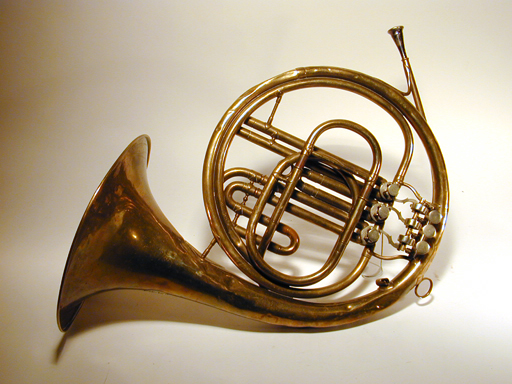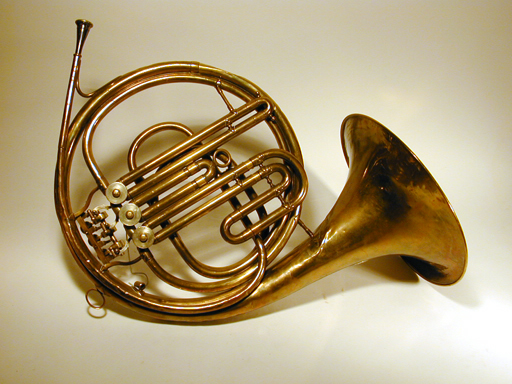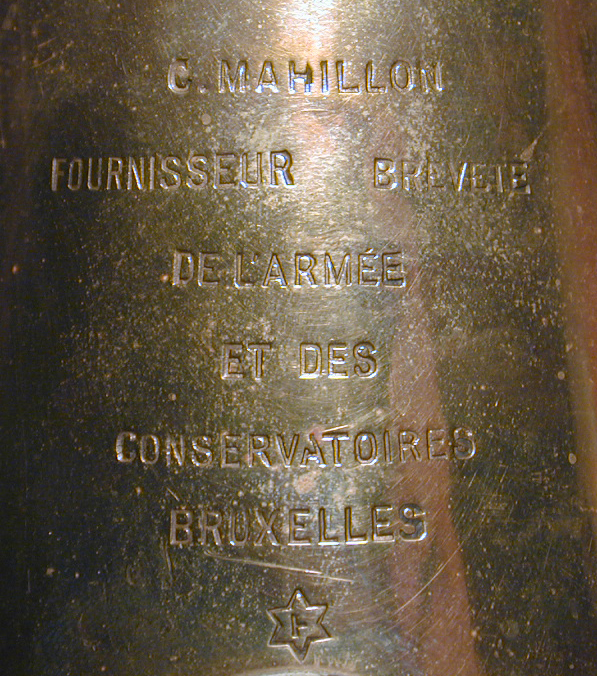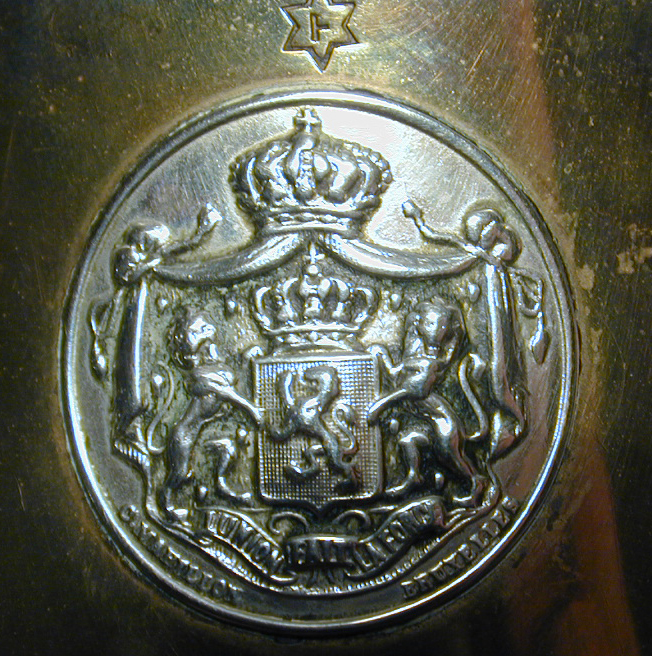|
|
||

Click for larger image> 
Click for larger image> |
The firm of C. Mahillon was founded in Brussels in 1836 by Charles Borroméee Mahillon (1813 - 1887), who after serving apprenticeship in England returned to Brussels to become a partner with his brother-in-law, C.G. Bachman as Bachman & Mahillon. In 1844 they opened a branch in London and by 1847 were exhibiting both brass and woodwind instruments. By 1856 C. Mahillon became the most important wind instrument manufacturer in Belgium and was suppplier to the army, and also maker of percussion instruments. Around 1865 eldest son, Victor Charles Mahillon (1841 - 1924) was taken into the firm as a partner. The firm continued in operation by the family for a century until 1935. Two years later the firm was taken over by Jean Adrien Smits doing business under the name "Mahillon & Co. succ. J. Smits." |
|

|
||

|
||
The medalion that is affixed to the bell below the label contains the Greater Seal of Belgium. It is described as follows:The shield is emblazoned: Sable, a lion rampant or, armed and langued gules. It is surmounted by a helmet with raised visor, with mantling or and sable and the royal crown in lieu of a crest. Behind the shield are placed a hand of justice and a sceptre with a lion. The grand collar of the Order of Leopold surrounds the shield. Two lions guardant proper support the shield as well as a lance with the national colours black, yellow and red. Underneath the compartment is placed the motto L'UNION FAIT LA FORCE in French or EENDRACHT MAAKT MACHT in Dutch. The ribband of the motto is red, with black stripes on either side. The lettering is golden. Since the Royal Decree of 1837 never received an official translation, the use of the Dutch version of the motto is customary rather than official. The whole is placed on a red mantle with ermine lining and golden fringes and tassels, ensigned with the royal crown. Above the mantle rise banners with the arms of the nine provinces that constituted Belgium in 1837. They are (from dexter to sinister) Antwerp, West Flanders, East Flanders, Lige, Brabant, Hainaut, Limburg, Luxembourg and Namur. |
|
|